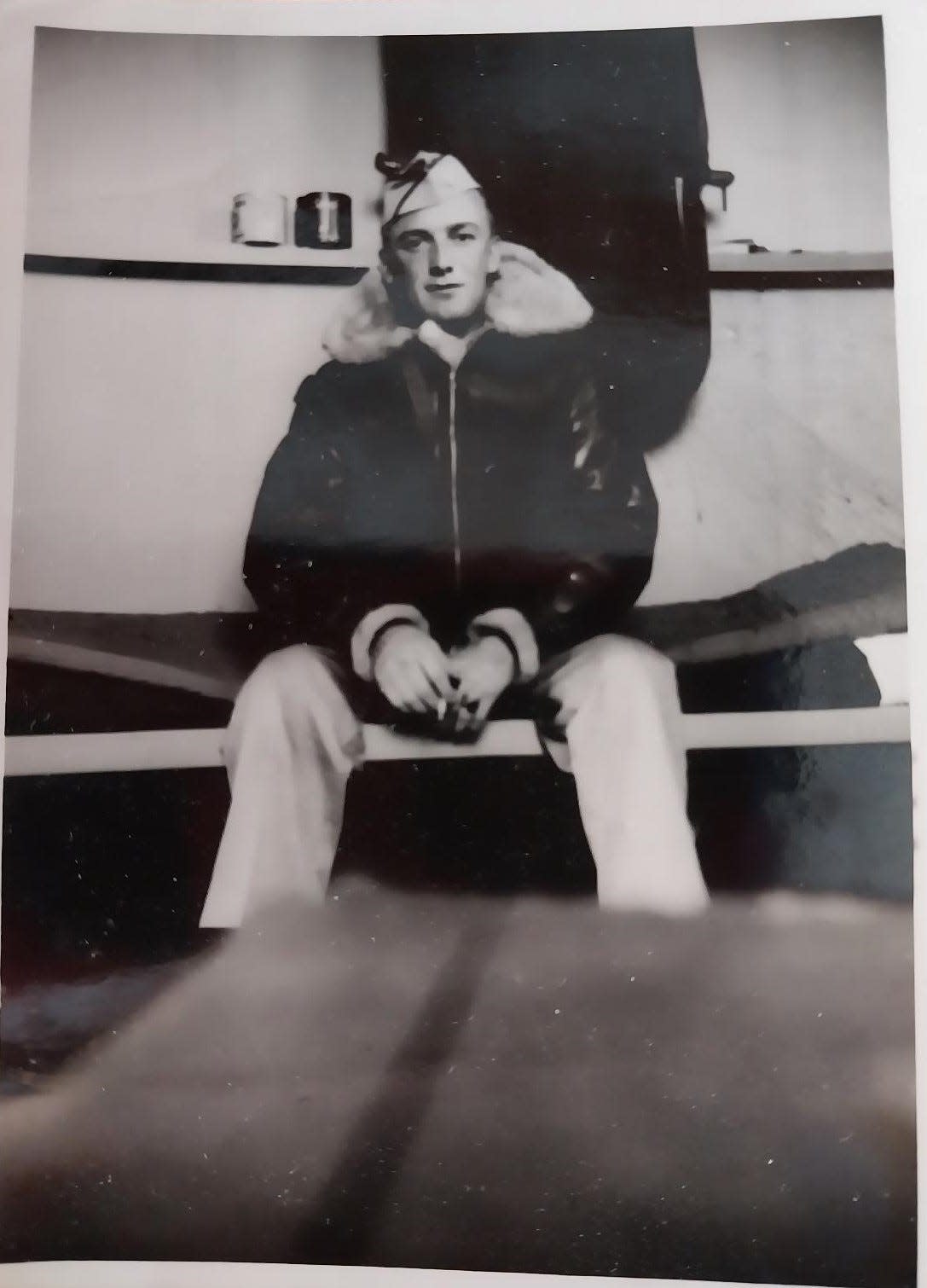Veterans column: Lt. Wayne Crowl writes to brother days before boarding B-24 to France

Jan. 16, 1944, was a busy letter-writing day for 1st Lt. Wayne Crowl.
Besides writing his grandma and her husband, he wrote his brother, who was recovering in the hospital from his leg wound. For this letter, he used V-mail, which was short for Victory mail. These were smaller letter sheets that were then microfilmed and printed on photographic paper that measured 4 inches by 5 inches. V-mail was used to cut down on the weight of the mail being transported.
“Dear Fenton, haven’t heard from you since I wrote last but I expect you’re busy again now, or having too much fun with those nurses these days, or are you? Hope you are feeling better by now and up and kicking the gang around at least I hope so. There isn’t much news from up here which is usually the case. I was on pass a few days ago and just most of the time keeping up the civilian morale which is part of the good neighbor policy as long as it helps thyself. Got in ten of those trips now, as I am pretty (far) up the ladder. Will get an oak leaf cluster soon to go with my air medal. Everything is going pretty good and so is things other places according to reports. It must be Hell for those bastards over there now and it will be worse later on. Well have run out of paper and news too, so I’ll shut up till next time. Hope you are OK, as I am the same. Best of luck and so long till next time, Trot.”
Veterans column: Lt. Wayne Crowl of Lock writes home to family in Mount Vernon in WWII
Five days later, on Jan. 21, Crowl was the bombardier on a B-24 headed for France with 794 other bombers from the 44th Bomb Group in England. They were accompanied by 628 fighter planes. Their targets were 24 German V-1 rocket sites in the Pas-de-Calais and Cherbourg-en-Contentin areas. According to the book, “44th Liberators over Europe” by Ursel Harvell, “The Forty-Fourth was assigned the seemingly easy job of knocking out some of these launching sites which were located just inside the French coast. The short time of being over enemy territory appealed to the crews and the missions acquired the misnomer of ‘milk runs.’ Bombing these sites from altitudes ranging from twelve to fifteen thousand feet proved costly as the Germans surrounded the sites with crack ack-ack (antiaircraft) outfits and the flak, though meager, was deadly accurate.” German fighter planes were also assigned to protect the rocket sites.
Veterans column: DNA confirms remains of 1st Lt. Wayne Crowl of Lock found 8 decades later
The pilot of Crowl’s bomber was 1st Lt. Hartwell Harrington. The copilot was 1st Lt. Herman Curtis and the navigator was 1st Lt. Richard Kasten. These three men would have been with Crowl in the nose of the plane. The other men of the crew were radio operator, Tech. Sgt. Alvin Rosenblatt, top turret gunner Tech. Sgt. Archie Barlow and ball turret gunner Staff Sgt. Nicholas Heiter. The waist gunners were Sgt. Alfred Klein and Staff Sgt. Charles Blakely. The tail gunner was Staff Sgt. Karl Boggs and Tech. Sgt. Ray Reeves was the cameraman. This mission changed their lives forever.
Doug Stout is the Licking County Library local history coordinator. You may contact him at 740.349.5571 or dstout@lickingcountylibrary.org.
This article originally appeared on The Columbus Dispatch: Veterans column: Lt. Wayne Crowl writes to brother ahead of France trip

